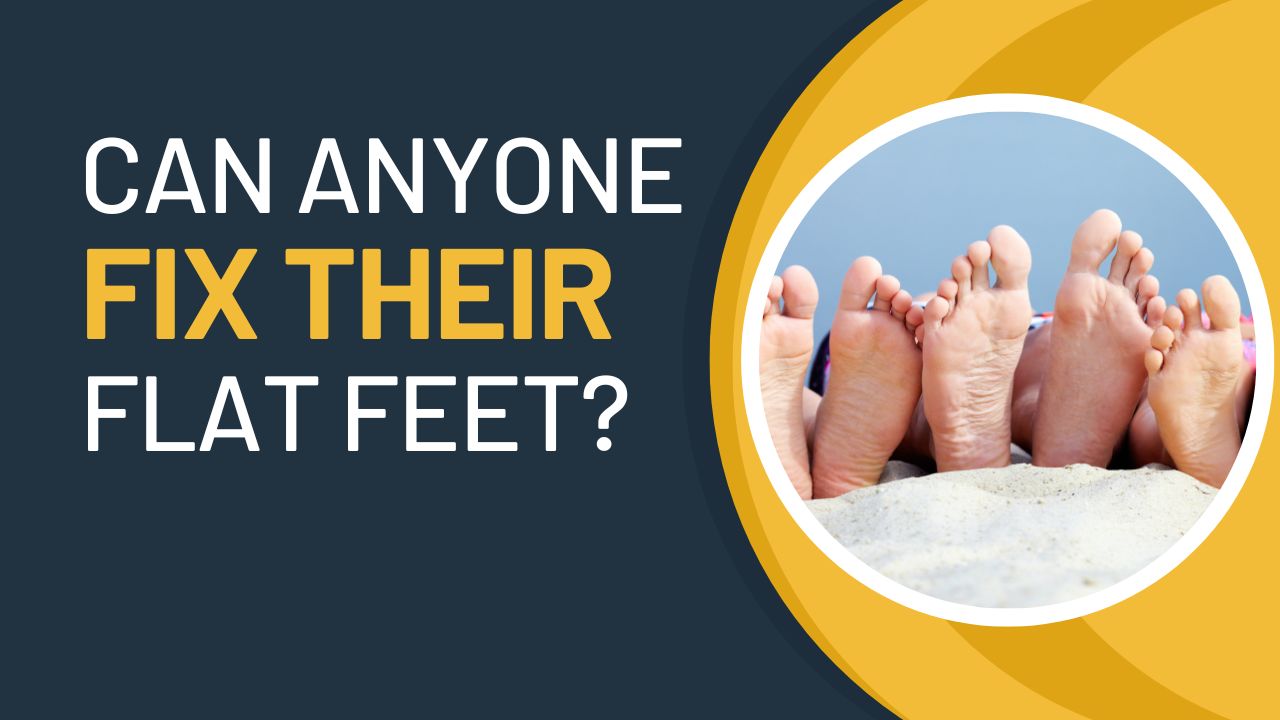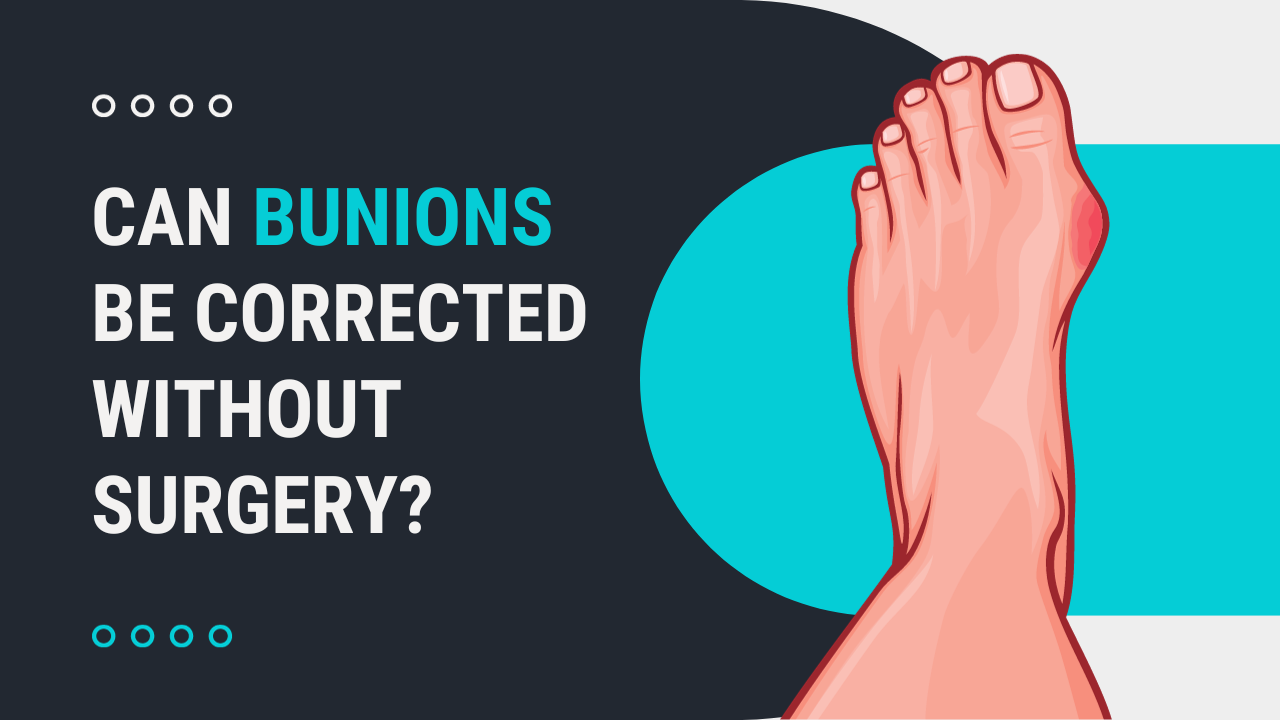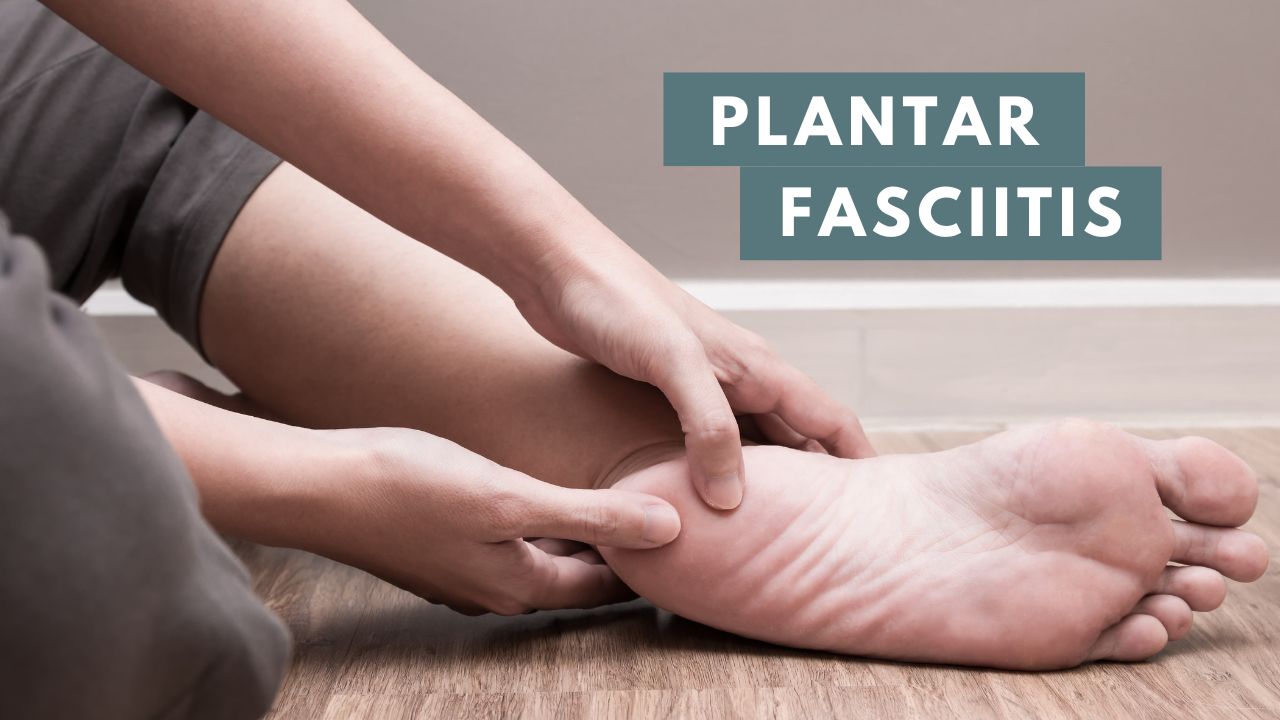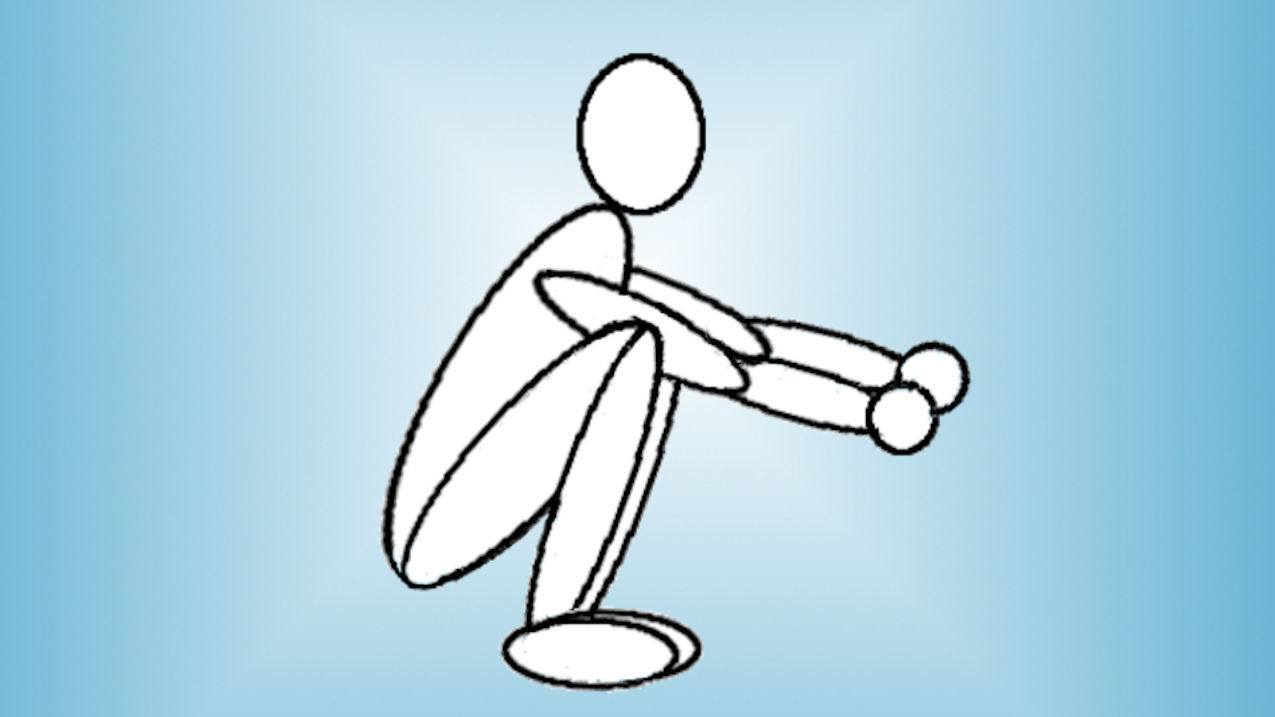If you’re like most readers, you arrived here wondering if it’s possible to correct flat feet. I was asking the same question back in 2012 when I created this site.
To give you a brief summary of my story, I was able to build arches in my previously flat feet after several months with a program of stretches and strengthening exercises.
You’ll notice that the site deals almost exclusively with my experience and that I’m not promoting a universal cure for flat feet.
I certainly think it’s possible for many cases of flexible flat feet to improve with exercise, and there is research that supports this which I’ll get into later.
However, I limit the scope of this site mainly to my experience because every individual is different, with their own unique factors and circumstances to consider.
It wouldn’t be possible to recommend a program that would work in all cases.
With that being said, I share my experience to show what is possible and to provide quality information on this topic.
In this post I’m going to go over some of the available evidence and historical context on correcting flat feet with exercise.
What Evidence Is There That Flat Feet Can Be Corrected?
When I first started searching for exercises to improve my arches it was difficult to know what information to trust. Many sources that I assumed were reputable said that flat feet couldn’t change.
There were some blog posts and videos showing exercises to supposedly fix flat feet, but without much proof that what they were presenting actually worked.
Historical Treatment of Flat Feet
Some of the best information I’ve come across to date is from over 100 years ago. In the early part of the 20th century, the use of exercise to correct flat feet was apparently a common practice.
Dr. Royal Whitman, a prominent orthopedic surgeon of that time, is quoted as saying “flat-foot is an acquired weakness and is understood to be preventable and curable”.
In a book originally published in 1909, physician and sculptor Robert Tait McKenzie wrote about the treatment of flat feet with exercise.1 He included before and after pictures of footprints showing the improvement from following an exercise program.
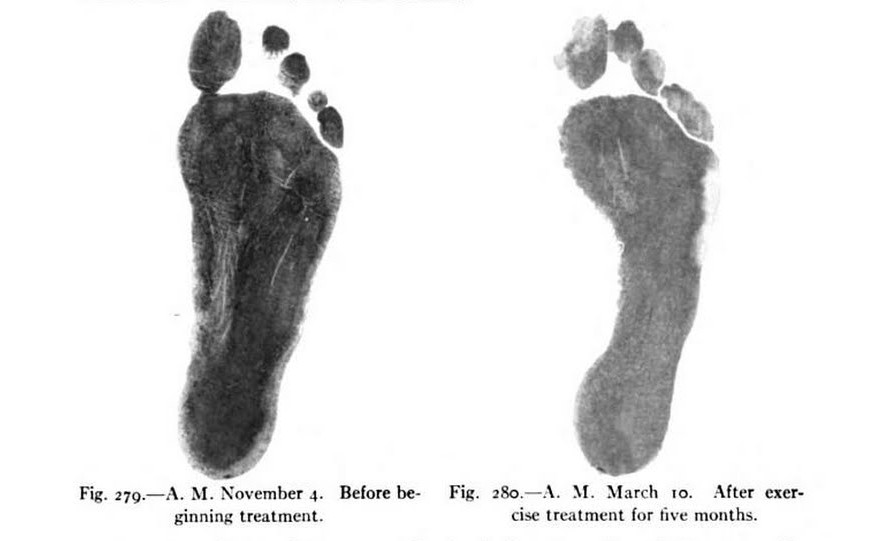
The exercises in the book are similar to some of the exercises I used in my program — like calf stretching, heel raises, and walking on the outside edges of the feet.
He wrote that exercises were often combined with the use of supports, like metal plates or bandages, but emphasized that these should only be used temporarily.
Here is another set of comparison footprints from McKenzie’s book:
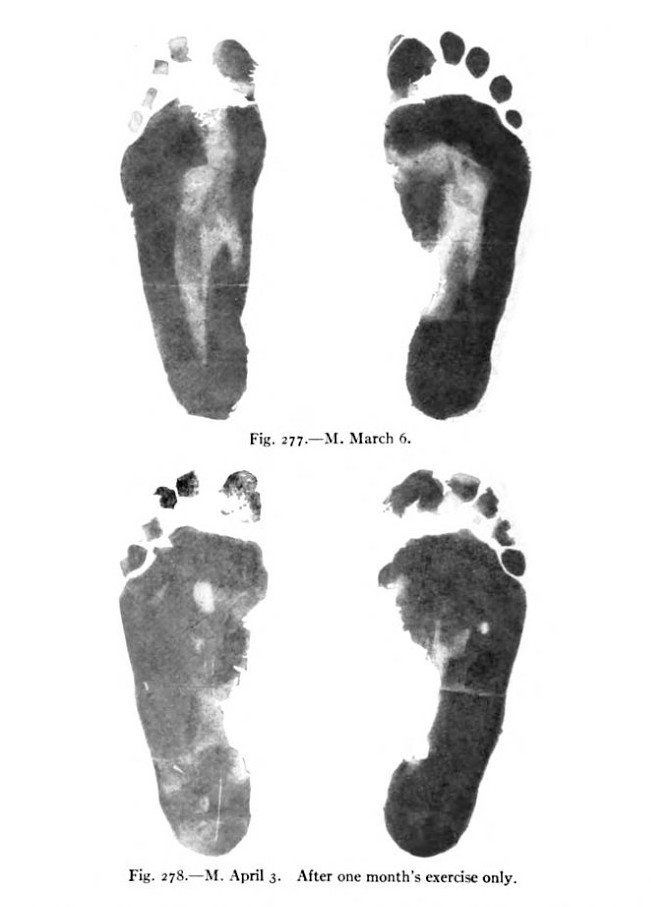
I didn’t become aware of McKenzie’s work until after I started this site, but we had similar thoughts about using footprints to measure changes in the arch. Here are my before and after footprints:
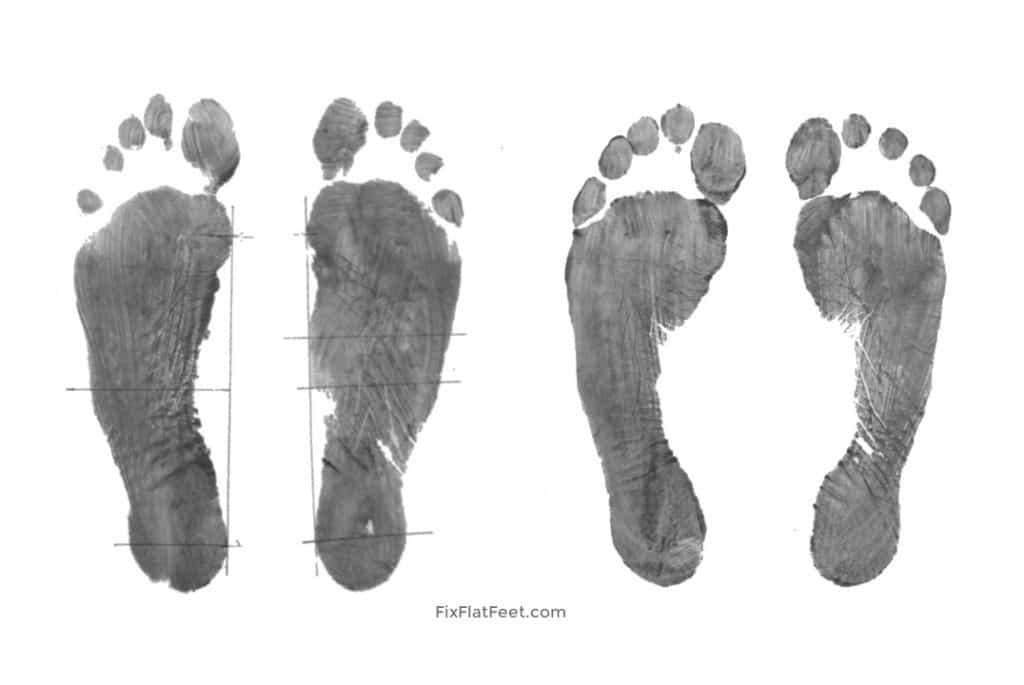
For anyone looking for more information on the historical view of flat feet, this excellent essay delves into how flat feet became seen as a societal problem and the development of flat foot camps used to to improve soldiers’ feet during the First World War.
Recent Evidence
During the second half of the 20th century, there doesn’t seem to be much attention paid to exercises for flat feet. It’s as if some of the lessons from history were forgotten.
At the time I started this project, the only study I found was from 1987, showing that the shape of the arch can be improved by increasing barefoot activity.2
However, in the last few years, several new studies have been published showing that foot strengthening exercises can improve the arch.3,4,5,6,7
One thing to note about these studies is that they are usually done with young, healthy adults and exclude people with foot problems or injuries.
And even then, the amount of improvement varies among the participants.
However, studies are not necessarily designed to produce the best outcome. And typically a study will only look at the effects of one or two exercises.
What worked best for me was a comprehensive program of stretching, strengthening, and being mindful of the way I stood and walked.
Some Exceptions
It’s important to note that when I refer to correcting flat feet, I’m only talking about the flexible type that I had. There are many conditions or injuries that alter the normal anatomy and function of the foot that make it unlikely for the arch shape to change.
One example would be a rigid flat foot which is often the result of how the bones are shaped or formed in the foot.
These differences don’t necessarily mean that the foot can’t function well, only that a lot of this information would not apply in those situations.
Current State of Information
Today, there seems to be quite a few articles and videos claiming to have the solution to flat feet. The quality of the information in these sources varies.
Obviously, there is no one solution that will work in every case, and there are many different types of flat feet.
I tend to be a skeptical person by nature, and that’s what led me to start questioning the common belief that my flat feet were a permanent condition.
It took me a while to realize I could improve my aches partly because of the widely promoted notion that feet need support to function properly.
So with this site I’m committed to providing quality information on the topic.
I can show what worked well for me but can’t say for certain what results anyone else can expect from the same program.
The Takeaway
The use of exercises to correct flat feet is a practice that goes back at least a century. Recent research has shown that exercises are effective at improving the arches in some people with flexible flat feet who are otherwise without foot problems or injuries.
Since every individual is different, there cannot be a one-size-fits-all solution. The best approach is likely one that is tailored to meet each person’s unique needs.
References
- McKenzie RT. Exercise in education and medicine. WB Saunders Company; 1909.
- Robbins SE, Hanna AM. Running-related injury prevention through barefoot adaptations. Med Sci Sports Exerc. 1987 Apr 1;19(2):148-56.
- Kim EK, Kim JS. The effects of short foot exercises and arch support insoles on improvement in the medial longitudinal arch and dynamic balance of flexible flatfoot patients. Journal of physical therapy science. 2016;28(11):3136-9.
- Sulowska I, Oleksy Ł, Mika A, Bylina D, Sołtan J. The influence of plantar short foot muscle exercises on foot posture and fundamental movement patterns in long-distance runners, a non-randomized, non-blinded clinical trial. PloS one. 2016 Jun 23;11(6):e0157917.
- Goo YM, Kim TH, Lim JY. The effects of gluteus maximus and abductor hallucis strengthening exercises for four weeks on navicular drop and lower extremity muscle activity during gait with flatfoot. Journal of physical therapy science. 2016;28(3):911-5.
- Russell RM, Simmons S. The effects of barefoot running on overpronation in runners. International Journal of Exercise Science: Conference Proceedings 2016 (Vol. 8, No. 4, p. 42).
- Mulligan EP, Cook PG. Effect of plantar intrinsic muscle training on medial longitudinal arch morphology and dynamic function. Manual therapy. 2013 Oct 1;18(5):425-30.
